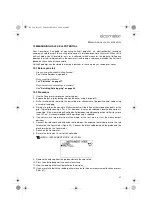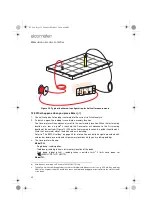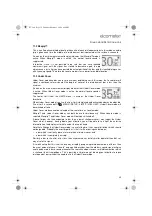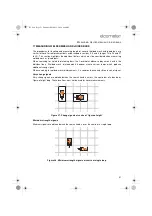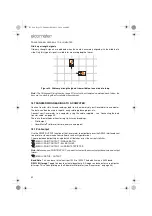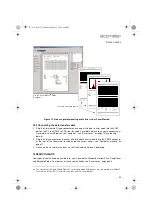
40
B
ATCHING
/D
ATA
LOGGING
R
14 BATCHING/DATA LOGGING
Your Covermeter includes internal memory which can be used to save depth of cover and half-cell
readings. Use this memory to save your readings as you take them; this will help to increase your
productivity on site and reduce the need to rely on paper and pen to record your results.
All readings saved into the memory of your Covermeter are stored in ‘batches’. Typically, a single
batch is used to store readings from a particular area or location on a site.
There are two types of batch; ‘linear’ and ‘grid’. Which type of batch you can use depends upon the
model of Covermeter you have:
•
Elcometer 331 Model SH - linear batches only
•
Elcometer 331 Model TH - linear
and
grid batches
Users of Model SH Covermeters can create linear batches only. Users of Model TH Covermeters
must define whether a batch is to be in linear (
) or grid (
) format when the batch is first
opened (created).
14.1 Linear batches
A linear batch of memory locations is similar to a single row or column of cells on a spreadsheet:
Maximum number of readings in a linear batch:
1000
Maximum number of linear batches:
10 (Model SH Covermeters)
200 (Model TH Covermeters)
14.2 Grid batches
Note:
The instructions given in this section (14.2) apply to Elcometer 331 Model TH only. Users of
Elcometer 331 Model SH can upgrade their instrument to model TH to gain this functionality -
contact Elcometer or your local supplier for details.
Grid batches are typically used when you are surveying large areas of concrete.
A grid batch of memory locations is similar to the grid of cells marked out by the rows and columns
of a spreadsheet:
Maximum size of a grid batch:
255 rows x 255 columns
Maximum number of grid batches:
1000
Maximum total number of readings:
240 000
Memory locations in a grid batch are referred to by their column letter and row number, for instance
A1, F4, etc.
Grid batches are typically used to save readings when surveying a large area of concrete:
•
On the concrete, mark out a pre-defined grid of squares, typically of 0.5 m pitch. This is an
arbitrary grid which does not necessarily align with the reinforcement bars.
30 33 29 28 35 30 30 27 28 31 33
A
B
C
D
E
F
G
H
I
J
K
L
1
30 33 30 27 28 31 33 35 32 30 30
2
29 27 28 31 33 35 32 30 30 27 28
3
30 27 28 31 33 35 32 28 30 27 28
4
35 27 28 31 33 35 32 30 29 27 28
5
331.book Page 40 Thursday, March 12, 2009 9:46 PM






